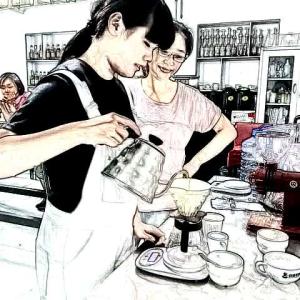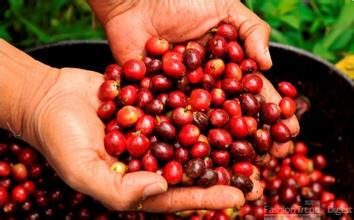Flavor description of Costa Rican Red Bourbon Red Honey treated Coffee Bean
Flavor description of Costa Rican Red Bourbon Red Honey treated Coffee Bean
Costa Rica can be divided into two seasons each year. The dry season is from December to April, when coffee is harvested, while the rainy season is from May to November. In recent years, micro-processing plants have been set up one after another, and since the water consumption is only 5% of that of traditional washing plants, and does not require huge sinks and exposure fields, the investment required is relatively small. The "honey-treated coffee" with low acidity, high complexity and strong sweetness has become the target of competition in the coffee industry in recent years, and the outstanding ones have greatly enhanced the international popularity of the estates.
Shumawa Manor, Costa Rica, is a very young manor; Francisco Mena, who was originally engaged in the coffee trade, bought the land and retained most of the original forests, only a small part of it was developed as a coffee growing area to maintain the natural ecological balance of the estate.
Shumawa Manor is about 1670-1790 meters above sea level. In the western valley, another well-known producing area in Costa Rica, the poor temperature, coupled with fertile soil, is very suitable for coffee cultivation.
High-quality Costa Rican coffee is called "extra hard beans". This kind of coffee can grow above 1500 meters above sea level. Altitude has always been a problem for coffee growers. The higher the altitude, the better the coffee beans, not only because the higher altitude can increase the acidity of the coffee beans and thus increase the flavor, but also because the night temperature at the higher altitude is lower, which can make the trees grow slowly, thus making the coffee beans have a stronger flavor. In addition, due to the high altitude drop caused by sufficient rainfall, is also very beneficial to the growth of coffee trees. However, while there are many advantages to growing coffee at higher elevations, the resulting additional transport costs must be taken into account, which is likely to make coffee production unprofitable. The coffee industry in Costa Rica has adopted new technologies to increase efficiency, including the use of "electric eyes" to select beans and identify coffee beans of irregular size.
Red honey treatment is a coffee carefully recommended boutique, clean fruit sweet flavor, the latter part of the light Hot Chocolate Milk oil flavor is the icing on the cake, but also provides carefully packaged hanging ear coffee bags for sale, we focus on providing coffee lovers with the best quality works. You are also welcome to make more exchanges.
Costa Rica is one of the countries with the most diverse biological species in the world, and its pleasant climate has created rich agricultural production resources, among which coffee is one of Costa Rica's main agricultural exports.
The coffee beans produced in the high latitudes of Costa Rica are famous in the world, full-bodied and mild in taste, and the coffee beans here are carefully processed, which is why there is high-quality coffee. Located in the south of SanJos é, the capital of Tarasu, Costa Rica is one of the most valued coffee growers in the country. Tarrazu is one of the major coffee producing areas in the world.

Important Notice :
前街咖啡 FrontStreet Coffee has moved to new addredd:
FrontStreet Coffee Address: 315,Donghua East Road,GuangZhou
Tel:020 38364473
- Prev

Introduction to the characteristics of Sidamo Coffee Flavor description, Grinding scale treatment and Taste production area
Description of Coffee Flavor in Sidamo Coffee the characteristics of varieties produced by grinding scale treatment introduce that the flavor of water-washed coffee is not easy to have wild flavor and has the characteristics of purity and freshness, which is suitable for the baking degree from City to Full City. In some essential excellent Ethiopian water-washed coffee beans, obvious aromas of lemon, citrus essential oils and jasmine can be detected.
- Next

Characteristics of mocha coffee beans in Yemen-coffee beans suitable for mocha pots
Yemeni mocha coffee bean species characteristics-coffee bean gene mutant suitable for mocha pot (Bourbon Pointu): found in Bourbon Island in 1810, the bean body changed from round to pointed, with only half the caffeine content; but the amount is small, weak and extremely precious (mostly cultivated in the laboratory). Elephant beans (Maragogype, or Elephant Bean): Tibika's best-known variety of beans
Related
- Detailed explanation of Jadeite planting Land in Panamanian Jadeite Manor introduction to the grading system of Jadeite competitive bidding, Red bid, Green bid and Rose Summer
- Story of Coffee planting in Brenka region of Costa Rica Stonehenge Manor anaerobic heavy honey treatment of flavor mouth
- What's on the barrel of Blue Mountain Coffee beans?
- Can American coffee also pull flowers? How to use hot American style to pull out a good-looking pattern?
- Can you make a cold extract with coffee beans? What is the right proportion for cold-extracted coffee formula?
- Indonesian PWN Gold Mandrine Coffee Origin Features Flavor How to Chong? Mandolin coffee is American.
- A brief introduction to the flavor characteristics of Brazilian yellow bourbon coffee beans
- What is the effect of different water quality on the flavor of cold-extracted coffee? What kind of water is best for brewing coffee?
- Why do you think of Rose Summer whenever you mention Panamanian coffee?
- Introduction to the characteristics of authentic blue mountain coffee bean producing areas? What is the CIB Coffee Authority in Jamaica?

